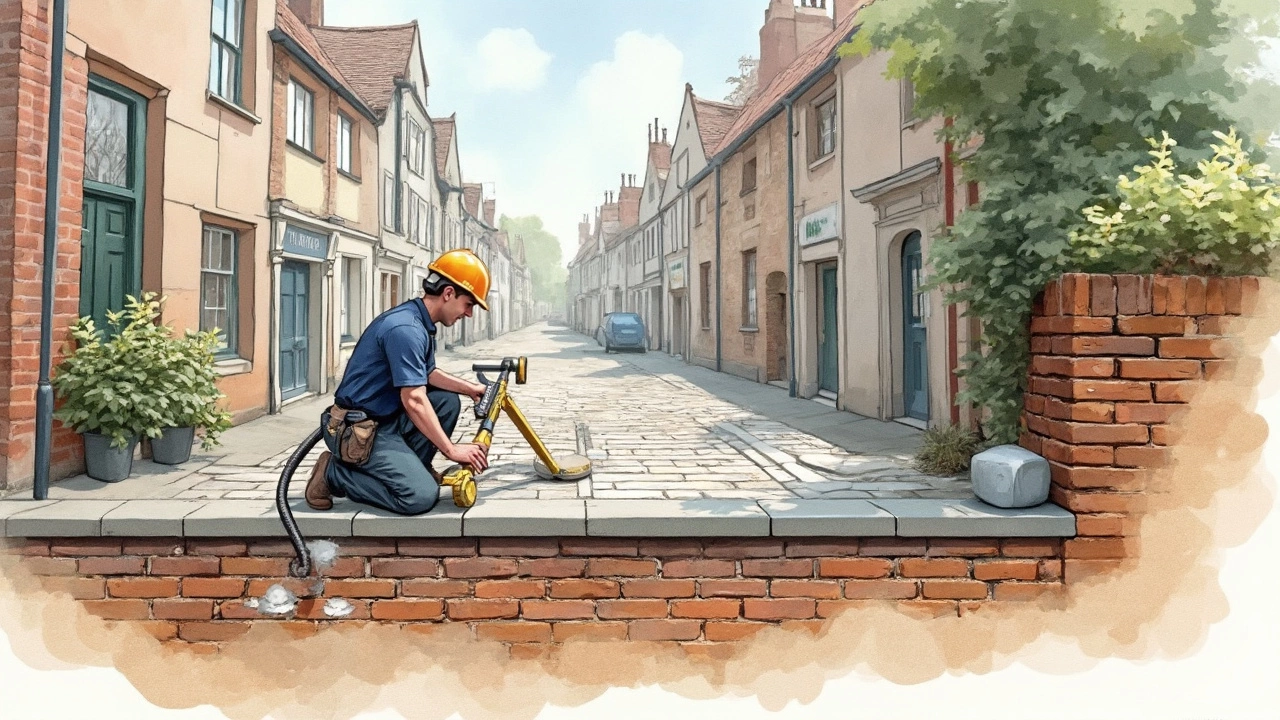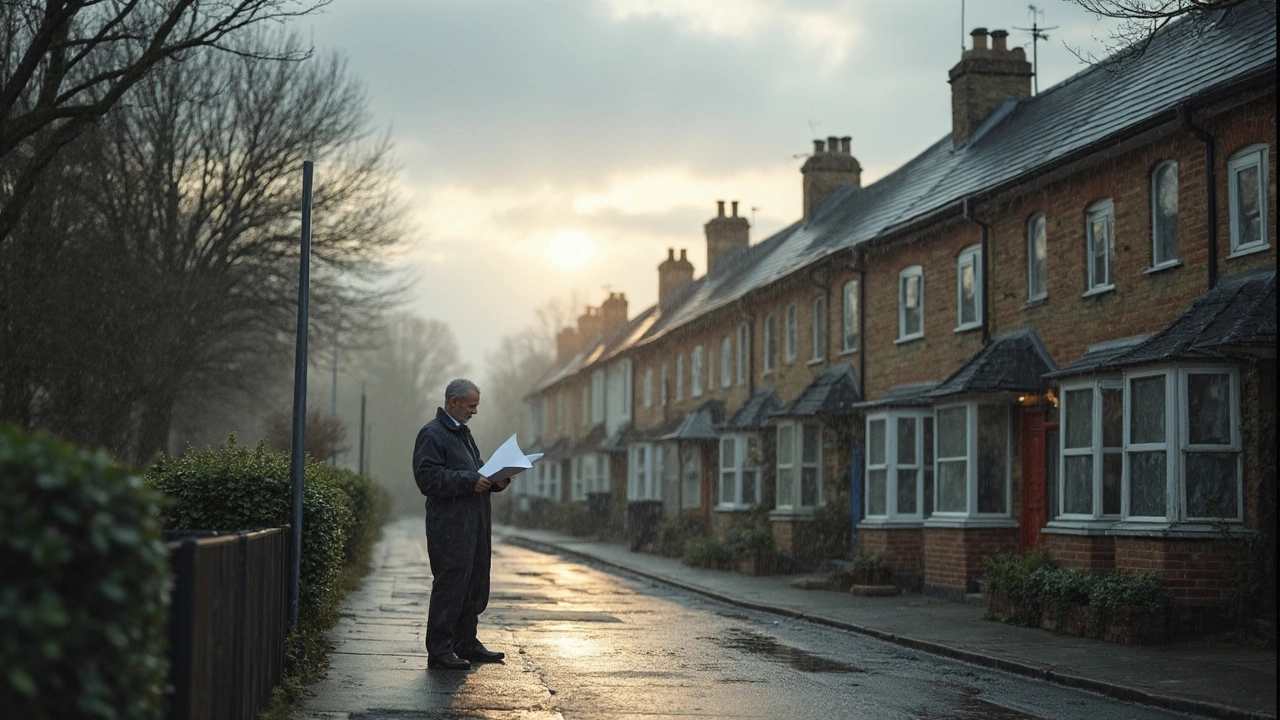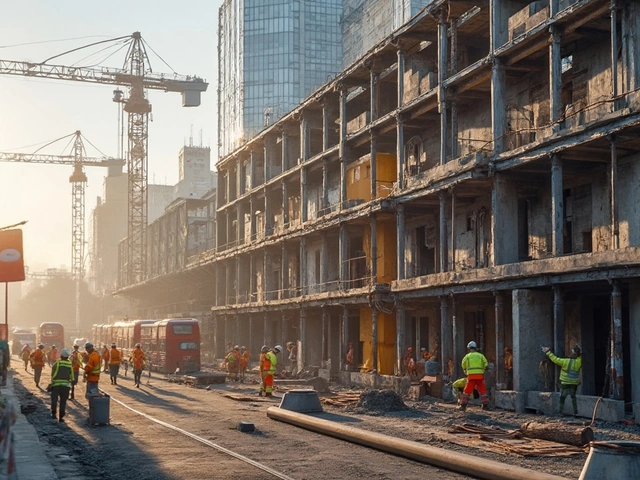Foundation repairs might not be the most thrilling topic, but trust me, it's one worth understanding. Your home quite literally rests on it! When your foundation has issues, it doesn’t just go away with time—it gets worse. So knowing what to do early on, and what methods work best, can save you a heap of trouble down the line.
First off, let’s talk about why foundations go south. Soil conditions are a big culprit. Heavy rain, drought, or even poor drainage can wreak havoc. And when the ground shifts, the foundation moves too, sometimes cracking or sinking.
Now, onto something lighter—fixing those pesky issues. Two methods often pop up: slab jacking and piering. Slab jacking is popular for smaller fixes; it involves pumping a mixture under a sunken slab to lift it back. On the other hand, piering is the heavy-duty option. It uses steel piers driven into stable soil to support the foundation.
- Introduction to Foundation Problems
- Identifying Early Warning Signs
- Popular Repair Techniques
- Choosing the Right Professional
- Cost Considerations
- Preventative Measures
Introduction to Foundation Problems
Let's get real about foundations—they're the backbone of every home. When things go wrong, it can feel overwhelming. But understanding the problem is the first step to fixing it. So, let's break it down a bit.
At a basic level, foundation problems stem from the ground beneath your house. Soil conditions play a major part. When soil gets too wet, it expands, and when it dries, it contracts. This constant movement can mess up what should be a flat and stable surface. Also, improper drainage or leaking plumbing can saturate the soil, making the situation worse over time.
Common Symptoms You're Likely to See
Not sure if you've got a foundation issue? Here’s a rundown of some common signs:
- Cracks in walls, especially around doors or windows
- Doors or windows that stick or won’t close properly
- Uneven or sloping floors
- Gaps around window frames or exterior doors
- Buckling or bowing walls
The Impact of Ignoring These Issues
So, why should you care? Ignoring these signs can lead to serious structural damage—not to mention the extra costs down the road. We’re talking damaged walls, broken pipes, or even a totally unsafe house if it goes unchecked.
Most folks don't realize that small cracks might just look like an eyesore, but they can be a window into much larger foundation repair needs.
According to the American Society of Civil Engineers, more than 25% of homes in the U.S. experience structural distress at some point. This isn't a tiny problem—it affects millions of homes. With facts like these, it's clear why it's crucial to address foundation issues sooner rather than later.
Why Understanding Different Repair Methods Matters
Knowing the right approach can really make a big difference. Depending on the problem, the solution varies. So, it’s essential to get a professional to assess the situation and suggest the best repair method tailored for your house.
Identifying Early Warning Signs
Spotting foundation issues early can save you loads of cash and hassle. But what exactly should you be looking for? Let’s chat about some common signs that your home's foundation might need some TLC.
Cracks Where They Shouldn't Be
The most obvious sign is cracking. Not every crack is a red alert, but when you start seeing them zigzag across brickwork or along your walls, take notice. Vertical cracks often indicate settling, while horizontal ones could be more serious and might require immediate attention.
Doors and Windows Not Fitting
Have you ever struggled to open a door in your home that once swung open like a charm? This can be a sign of a shifting foundation. When the home’s base moves, it throws off door and window alignment.
Uneven or Sloping Floors
A wonky floor isn't just annoying; it can be a sign that your foundation needs some checking. Use a level or even a ball to see if the floors are flat. If the ball rolls to one side, you might have an issue.
Gaps and Space
A growing gap between the walls and the ceiling could be a warning signal. As foundations move, they pull on the structure, making gaps appear.
Water Intrusion
Water seeping into the basement or crawl spaces can weaken the structure over time. Pay attention to any damp spots or moldiness. They might be telling you it's time to get help.
If any of these signs crop up in your home, don’t panic right away. The next step is to call in a professional for an assessment, especially if you're noticing multiple issues. Knowing these signs can help you catch a problem early, potentially avoiding a major repair job and hefty bills later on.
Popular Repair Techniques
Figuring out the right method for foundation repair can feel overwhelming. Let’s break it down so it's easier to understand. The most common techniques used today are slab jacking and piering. They're like the peanut butter and jelly of foundation repairs—tasty solutions that tackle different aspects.
Slab Jacking
If you’ve got a sunken slab, don’t panic—slab jacking could be your go-to fix. This method involves drilling small holes into the concrete and pumping a mixture underneath. It raises the slab back to its original position. The mixture, usually a cement-like grout, fills voids and stabilizes the area.
Why slab jacking? It's cost-effective and less invasive; the whole operation is quick and doesn’t disrupt your yard or landscape. Plus, you can walk on the surface almost immediately. But it’s not suited for every situation—it's mainly used for smaller problems.
Piering
When a foundation needs some serious help, piering steps in. Imagine steel piers driven deep into the ground to find firm soil or bedrock. These piers then support the foundation, lifting it back to level and preventing future movement. It’s a robust solution when the soil is the main troublemaker.
Piering comes in several types—push piers and helical piers being the most common. Push piers are driven into the ground using the building’s weight as leverage, while helical piers resemble large screws twisted into the earth.
| Technique | Best For | Cost |
|---|---|---|
| Slab Jacking | Minor surface repairs | Low to moderate |
| Piering | Major foundation issues | Moderate to high |
Both methods have their place. It’s not about which is better, but which is right for your specific situation. A professional assessment will guide you to the best solution tailored to your home's needs.

Choosing the Right Professional
Finding the right folks for foundation repair is crucial—you don’t want just any provider; you want someone who truly knows their stuff. The quality of the repair is only as good as the person doing it, after all.
Do Your Homework
Start by researching providers. Check their reputation online. Websites like Better Business Bureau or services like Angie's List are great places to look up reviews and ratings. They’ll give you a sense of how other homeowners rate their work.
Credentials and Experience
Ensure the contractor is licensed and insured. This protects you from any liability issues should anything go wrong during the repair. Additionally, experience matters. A contractor who’s been in the game for years has likely dealt with a wide range of foundation issues and knows how to handle them effectively.
Get Multiple Quotes
It's smart to get at least three quotes to compare. Don’t always go with the cheapest option; sometimes you get what you pay for. Look at what’s included in the quote and the materials they plan to use.
Ask About Methods and Materials
Discuss the methods they plan to use. Do they recommend slab jacking or piering? Ask why they prefer one method over another. Also, inquire about the materials they use. Quality matters here, so ensure they use the best available options.
Warranty and Follow-Ups
A good contractor will offer a warranty on their work. Whether it's a five-year or a lifetime warranty, this shows they stand by their job. Also, ask about post-repair follow-ups. Will they come back if you notice issues later on?
| Provider | Online Rating | Years of Experience |
|---|---|---|
| Foundation Masters | 4.8/5 | 15 |
| Bobby's Repairs | 4.6/5 | 10 |
| Rock Solid Services | 5/5 | 20 |
At the end of the day, choosing the right professional makes all the difference in the stability of your home. Take your time in making this decision. Your foundation's integrity—and your peace of mind—depend on it.
Cost Considerations
Let's face it, fixing your foundation isn't going to be cheap. But understanding the foundation repair costs can help you plan better and avoid getting blindsided by surprise expenses. Costs can vary widely, depending on the method and extent of the repair needed.
Factors Impacting Cost
The first thing to consider is the severity of the damage. Minor cracks may cost just a few hundred bucks to fix, but a sinking foundation might set you back a few grand. The repair method plays a big role too. For example, slab jacking usually costs less than piering, simply because it's less labor-intensive and uses fewer materials.
What You'll Pay On Average
On average, homeowners spend around $4,500 for foundation repair. Smaller repairs might be as low as $500, while major renovations could go upwards of $10,000. Of course, location matters. If you're living in an area with expensive labor costs, expect to pay more.
| Repair Method | Average Cost Range |
|---|---|
| Slab Jacking | $500 - $1,500 |
| Piering | $1,500 - $10,000 |
Don't forget to budget for inspection fees. Getting a professional to assess the issue might cost between $300 and $700, but it's a crucial step to avoid unnecessary repairs.
DIY vs. Hiring Professionals
Thinking of DIY to save some dough? Unless you're a seasoned pro, tackling foundation repairs yourself might do more harm than good. Hiring professionals ensures the job gets done right, even though it might pinch your budget. Remember, a shoddy repair can lead to bigger, more expensive problems down the line.
Cutting Down on Costs
- Get multiple quotes to compare prices.
- Check for local government grants or subsidies aimed at home repairs.
- Some contractors offer financing options to help spread the cost.
While the price of foundation repair might seem daunting, these repairs are investments in your home's safety and value. No one wants to spend extra, but a well-done repair can prevent future headaches and maintain your property's worth.
Preventative Measures
Keeping your foundation in tip-top shape can spare you a lot of headaches and expenses down the line. Let’s talk prevention!
Manage Water Around Your Foundation
Water might be life’s elixir, but too much can be a home's worst enemy. Keep gutters clean and downspouts directed away from your foundation. Aim for about 5 feet of clearance. It ensures that rainwater doesn't pool around your foundation causing issues later. Installing a proper drainage system goes a long way too. It can save you from those pesky foundation repair bills.
Maintain Consistent Moisture Levels
Soil expansion and contraction are real concerns. In drought conditions, watering your foundation (sounds odd, right?) helps maintain a consistent moisture level, preventing soil shrinkage and potential foundation issues. It’s a small effort for huge peace of mind.
Keep an Eye on Trees and Shrubs
Trees and shrubs are great for curb appeal but can be a nightmare for your foundation if they're too close. Their roots can mess with the soil structure. Plant new trees at a safe distance and consider root barriers for existing ones.
Pier and Beam Maintenance
If your house has a pier and beam foundation, regular checks are vital. Ensure the beams are stable and the piers are secure. Occasionally, adjust the wooden components if shifts occur.
Regular Monitoring and Inspection
A simple but effective method—walk around your home every couple of months to look for cracks or signs of shifting. Spotting changes early can prevent a small issue from becoming a big (and costly) one.
Data Insight
Interestingly, a study noted that homes with good drainage were 70% less likely to encounter significant foundation problems. It just shows that a bit of effort up front can lead to significant savings!
By taking these actions, your foundation stays solid, sidestepping pricey repair techniques like piering and slab jacking. It's all about being proactive rather than reactive when it comes to home maintenance.





